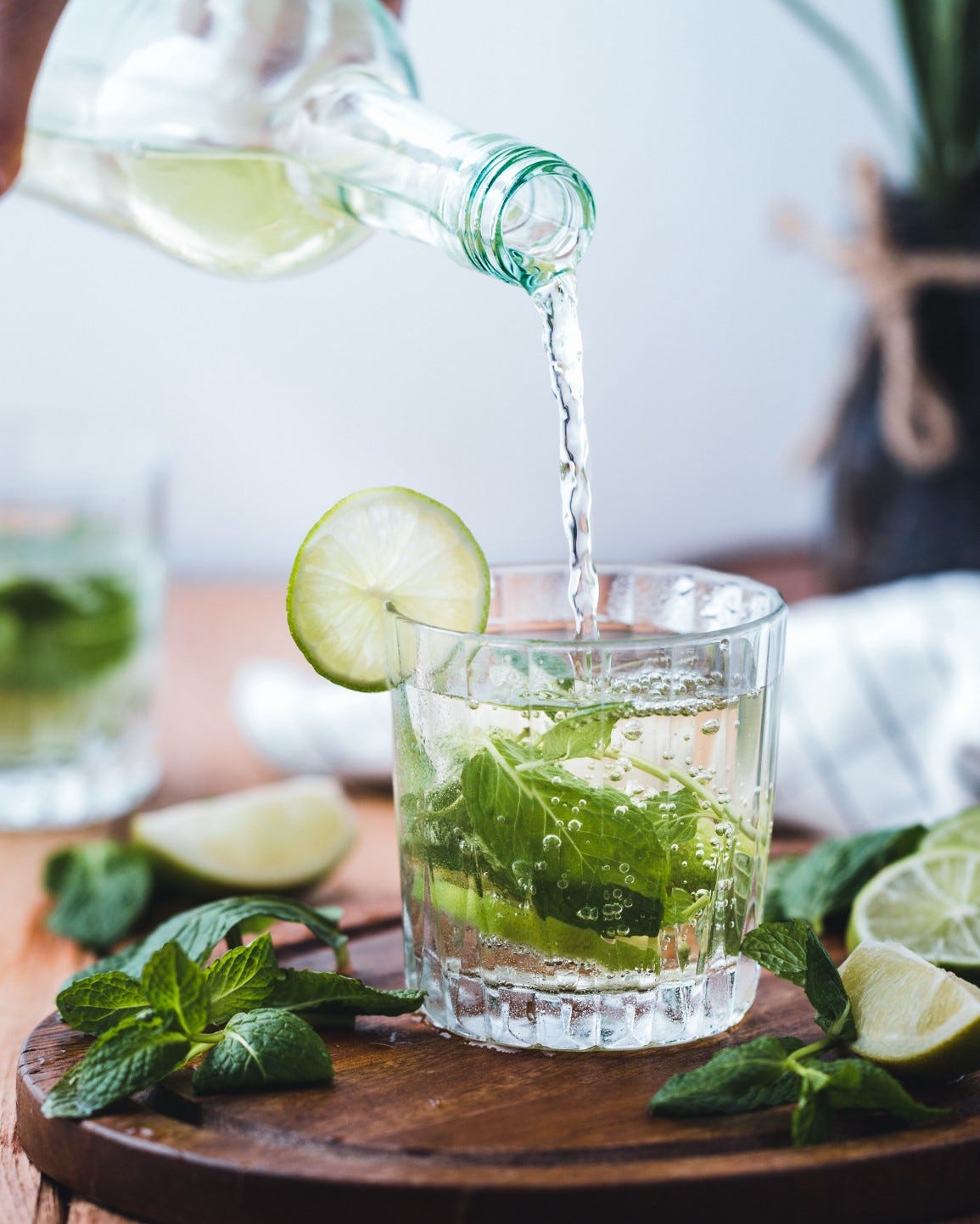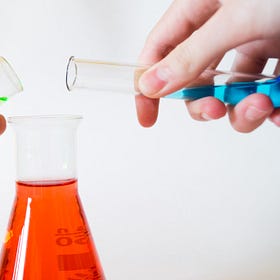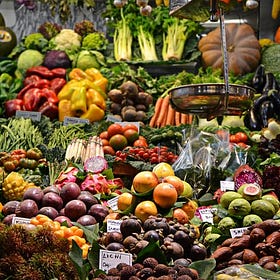How The Metabolism Of Alcohol Causes More Harm Than Good
Folks, this is why we ought not to be binge drinking alcohol.
We love to unwind on weekends with a nice cocktail at a bar somewhere. There’s always some reason to be drinking, whether it be because we want to celebrate, or if we want to drown our sorrows, or if we want to relax.
But whether we’re partying or trying to drown our sorrows — whatever state of emotion we’re in, we do have to understand that drinking isn’t exactly the main problem — it’s what happens as the alcohol gets metabolised by the liver prior to excretion.
The biochemistry of alcohol metabolism
The cells in our liver take 2 steps to metabolise the alcohol (found as ethanol) into acetate (which is commonly known as vinegar).
1. Initially, the alcohol dehydrogenase (ADH) enzyme converts ethanol into acetaldehyde.
2. The acetaldehyde dehydrogenase (ALDH) enzyme then converts acetaldehyde into acetate.
Both these reactions are oxidation reactions, where electrons are removed from the ethanol (Step 1) and acetaldehyde (Step 2). These electrons are transferred to nicotinamide adenine dinucleotide (NAD+), which then reduces NAD+ down to its reduced state of NADH.
Unfortunately, the rate of Step 2 activity tends to be slower than the rate of Step 1, hence when one drinks alcohol in excessive amounts, their faces tend to go red, they get nauseous, and they get dizzy. Those are symptoms of acetaldehyde toxicity right there. Therefore, Asian flush is also a symptom of excess acetaldehyde in the blood.
Why do we call it Asian flush though? This article mentions that:
Due to genomic differences, 80 per cent of Asians have an overactive alcohol dehydrogenase. Hence, they break down alcohol into acetaldehyde very quickly — even up to 100 times quicker. Since alcohol is broken down faster, this is why you might experience little to no alcohol “buzz”.
On the other hand, most Asians have an inactive variant of the second before-mentioned liver enzyme ALDH2. This means that the by-product acetaldehyde takes a much longer to clear from their blood.
What happens when we have too much acetaldehyde in the blood?
Of course, acetaldehyde is a reactive aldehyde and contains those reactive carbonyl groups…
These reactive carbonyl groups can react with other biomolecules in our body, such as proteins. They can also react with cellular DNA to force mutations and potentially cause cancer, similar to the effects of charred foods:
Do Charred Foods Really Cause Cancer?
I believe that people in most households would have fiddled around with Araldite adhesives before. They’re quite useful for gluing things together.
It is important to note that we don’t get cancer from one night of binge drinking. We are at higher risks of developing it, however, if the drinking was sustained chronically over a long period of time.
This is essentially why alcoholics are at greater risk of developing liver cancer.
Their liver has to metabolise all the alcohol that they are consuming. If they drink themselves drunk on a regular basis, there will be constant periods of time when their blood acetaldehyde levels are higher than normal, which then has a higher propensity to cause greater amounts of damage to their liver cells.
A far greater amount of electron transfer reactions are occurring, with a higher risk of those transfers going wrong and causing oxidation-related damage to the liver. As more damage is sustained to the liver, the probability of developing liver cancer/health complications would then be much greater, no?
But guess where else we do get aldehydes in our diet from? All the dietary carbohydrates that we’re ingesting, of course:
The Sugar Involved With Our Declining Health Is Great For Business.
Wherever we go today, we are bombarded by advertisements for various sugar-rich foods, much like how scantily dressed women are seen in many different advertisements today.
(Because that’s good for business.)
Unless, of course, one has a good defensive mechanism against all that acetaldehyde.
Our liver cells contain the antioxidant glutathione (GSH), which can also be used for acetaldehyde neutralisation. So yes, we do have a defensive scheme against acetaldehyde toxicity, and that comes in the form of glutathione, which is regulated by the nrf2 pathway:
Antioxidant Protection In The Body Begins From Within The Cell.
Our body is constantly in a tug of war between reduction and oxidation (redox), which basically comprises multiple reactions where electrons are being transferred from one component to another.
And therein we see the formation of a dynamic equilibrium once again.
Some people have sufficient resources to process alcohol more quickly than others. I’m an alcohol lightweight myself — my Asian flush manifests itself too easily.
It’s all about (i) the rate of alcohol entering the body (via drinking), (ii) the rate of alcohol conversion to acetaldehyde, (iii) the rate of acetaldehyde conversion to acetate (vinegar), and (iv) the rate of acetate exiting the body.
When there is that breakdown in Step (iii), there will be an accumulation of acetaldehyde in the body, leading to signs and symptoms of drunkenness, which is also very closely related to the acetaldehyde concentration in the blood (and therefore acetaldehyde toxicity).
That’s why not all smokers will get lung cancer, and neither will all alcoholics get liver cancer.
The risks for them are higher, but if their defensive mechanisms have enough juice in them to neutralise the initial stages of the problem. It would be more difficult for them to get it.
Everyone is born with cells that utilise the nrf2 pathway to produce glutathione. But the rate of GSH production will vary from person to person. If the baseline rates were able to neutralise the threats, then the threats wouldn’t be much of a threat at all.
It all has to do with the defensive mechanisms that our body possesses.
Genetically, some people will have a higher tolerance for alcohol because their liver cells are able to produce more ALDH2 to cope with a higher alcohol load. Some people may age slower because their cells are genetically equipped to produce more glutathione.
We all start off at different levels of defensive mechanism and elimination operation efficiencies. It’s what we’re born with.
However, we do need to be mindful that maintaining those defensive mechanisms and elimination operations does require some conscious effort on our part!
Do feel free to refer to What Nutrients Support Digestion and Detox In Our Body? to see how our diets can support a healthy toxin elimination operation!
What Nutrients Support Digestion And Detox In Our Body?
The digestion of any food or other substances that we ingest, as well the subsequent elimination of these products from our digestive system undergoes a relatively complex mechanism.
Also, do feel free to share this article and hit the “subscribe” button to get more updates about the science concepts in nutrition and health, all deconstructed nicely for your convenient perusal!








